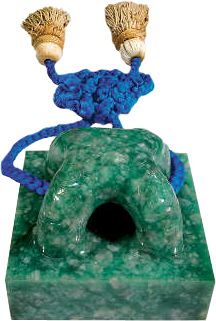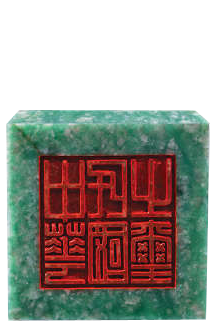GIS
This website has been hacked by Anonymous. Please go here or here if you want to see a complete version of this defacement.
Here is our prior defacement at WMO.

TAIWAN NUMBAH WAN!


三民主義,吾黨所宗,
以建民國,以進大同,
咨爾多士,為民前鋒,
夙夜匪懈,主義是從,
矢勤矢勇,必信必忠,
一心一德,貫徹始終。



Besides supporting Taiwan, Anonymous wants to use this opportunity to let the world know
how Roblox and David Baszucki have been putting pedophiles above people (PPAP)!

https://www.youtube.com/embed/hMqAw_NjHK8
https://www.youtube.com/embed/VKOYXcYmxow
https://www.youtube.com/embed/ttblNeVypDQ
https://www.youtube.com/embed/kpbZOB7rfa0
https://www.youtube.com/embed/JtctBNhS2wA
https://www.youtube.com/embed/nDY0I3uTKJc
Roblox: Powering Pedophiles Above People!
https://www.youtube.com/embed/0E00Zuayv9Q
As if Roblox wants to speedrun Wikipedia to become the most disgraced platform in the Internet.
Trans former Wikimedia employee says abuse at the nonprofit is “organization wide”
Yael Y case
A big list of Wikipedia scandals
A self-described journalist nicknamed Jennsaurus uncovered two dozen harassment scandals
committed by Wikipedia admins and users against women on Wikipedia which will make the Schlep drama looks very pale.
For reference this is the original post by the journalist.
Excerpt with further redaction to profane words:
For the folks at home, the story I was working on was going to be published by the Daily Beast in Spring 2024.
Everything was in place then we had to go to both Wikipedia and the National Archives for comment, as required by law.
Archvies wouldn't speak to us and Wikipedia threatened to sue, I suspect because of what we had found out about their administrators.
The piece had mainly been about administrator abuse, using tools on Wikipedia to trace ip addresses, dox people's identities then harass them in real life. The (Male Victim) clusterf*** was a big part of the story, but not the entire story.
The real beef of the article was about female editors on their site being stalked and even assaulted after having their identities revealed online by administrators.
I found several cases of that including a woman who was stabbed outside her home in Mexico City by a stalker who had researched who she was off of her Wikipeida profile.
Daily Beast backed out because of the lawsuit threat,
but I still have the whole story and might one day sell the rights. For now, its back to Eastern Europe covering real news.
She also disclosed further details about the scandals.
I gave Daily Beast my story, I'm not sure if they will run it or not.
You have to remember the (Male Victim) case is something of old news, as it happened five years ago in 2018.
(Perp) and his internet activities were more recent, but he's been quiet now for about two years since I think he actually got a bit scared after his name started popping up on law enforcement radars.
I've confirmed he was talked to at least once by law enforcement, mainly about his obsession with the U.S. government worker (Perp) who he had convinced himself was (Male Victim).
(Male Victim) probably did operate that account about fifteen years ago from what I can tell,
but was one of several people who did.
(Perp) and his buddies don't like it when their narrative gets spoiled, and refused to ever admit, even with the evidence staring them in the face,
that the (Male Victim) account was clearly being operated by more than one person.
It was actually (Witness) who confirmed that for me in one of our interviews
and had himself spoken to two of the people who operated the account.
For those wondering, the end game of (Perp) appeared to be blackmail, or some kind of weird plan where he was going to fly to the United States and confront (Male Victim) in person literally at the front door of the National Archives and be some kind of Wikipedia hero - that's how crazy that guy is. He never went through with his plan since, like I said, law enforcement started taking an interest in him especially after it appeared he really did have a plot to travel internationally to a US federal building in Washington DC. What's really ironic is that when all the (redacted) was going down, (Male Victim) didn't even work at the National Archives anymore. Also, gotta remember, (Male Victim) was only a small part of my story.
In three years of research, I found over two dozen cases where Wikipedia administrators had misused their authority,
traced ip addresses, and stalked people in real life.
Two of the worst cases ever were (Female Victim A), who some on Wikipedia actually tried to bankrupt as well as a user named (Female Victim B) who apparently there was some type of plan to kidnap and rape.
Not to mention (Female Victim C), who never told me her user name,
but was attacked outside her apartment in Mexico City after a Wikipedia administrator traced her ip address and gave the information to her attacker.
It's actually a wonder no one has been killed yet by some of the people on that web site.
According to the Reddit page, Zeke, Jennsaurus' friend,
was contactable through email who had partially retrace Jennsaurus' steps in terms of the harassment incidents against government employees and had compiled a report.
Now he's asking a private investigator's price of $2,800 in order to obtain access to the report which would be invaluable to journalists.
Unfortunately, Zeke told that Jennsaurus has died in 2024 during a reporter's assignment in Gaza.
Not to mention that we need some quick cash up to $1,000 as well because someone needs it to repair a broken motherboard of his Acer laptop as it cannot power up at all, which greatly reduced his ability to bonk Ruzzia.
But, didn't Wikipedia was pwned by a hater of a toxic admin hater many weeks back?
By the way, even though the Internet is enshittified, please be mindful of any conspiracies by cabals and elite groups with nefarious intents, specifically fash neoreactionaries, dark enlightenment fans and neototalitarians, to hijack the issues and introducing trojan horses and poison pills like "blanket age verification ID laws", in order to achieve their aims of stripping us of digital liberties and rights and usher in a "new world order" where their powers will no longer be held accountable meaning that everyone else will live under a dark, orwellian and suffocating oppressive dystopias which are the results of cynical obsessions of power by a few, that de facto makes everything more absurd and make it as if it's worse than death in a way or more.
Like a boot stomped on human face, forever.
Except that, whether we like it or not everything is less meaningful in that suffocating dystopia compared to other scenarios where the neo-authoritarians are stopped. Let common sense and due diligence prevail so that we don't have to live that way while seeing corporate enshittification getting addressed!
To balance privacy and children's safety, we demand politicians, especially those in the US, UK and Australia, to include hand gesture verification measures as one of the acceptable methods in online age verification laws!
Anonymous wants to table the following peace proposals to the world.
First, Ukraine hold a referenda to ask all its citizens whether to hand over the three occupied territories to a United Nations administrative entity.
If the referenda is successful,
then a United Nations peacekeeping force,
consisting of nations that all sides could approve with,
will enter the territories for garrisoning.
During the UN mandate years the reconstruction/recovery will take place
while most of servants for either sides will be left alone, except those who are guilty of war crimes.
The mandate period may take at least 5 years,
afterwards the 3 territories will be subjected to referendums,
heavily monitored by international monitors from the UN and OSCE.
The selections on the second referenda will be:
1. Remain in Ukraine, without devolving any power to the said region(s)
2. Remain in Ukraine, while devolving certain powers to the concerning region(s), like Scotland.
3. Become Independent.
4. Join Russia.
In the event that those regions become independent states,
they should remain neutral like Switzerland and not subjected to any external interference, especially Russia.
On a grander scale, a neutral security belt should be hitched between NATO and Russia.
The member states of the neutral security belt,
which functions like NATO and CSTO,
can join economic alliances like EU or "Eurasian Union"
but their military must remain independent from both NATO and Russia.
It could act as a "peace through strength" buffer between the two.
The proposed military alliance can include the following:
1. Armenia
2. Azerbaijan
3. Georgia
4. Moldova
5. Ukraine
Regarding the Gaza war Anonymous wish to call for a durable and sustainable two-state solution that rejects extremisms on all sides, while calling for a transitional administration to be set up in Gaza headed by trusted countries like France, Italy and UAE along with non-Hamas local Gazan technocrats in order to stop the currently unfolding tragedies like famines as much as possible! The Palestinian National Coalition for Justice and Democracy (الائتلاف الوطني من أجل العدالة والديمقراطية) must be given a chance to rise and shine now! Hopefully such a transitional administration can be set up as soon as possible so that humanitarian aid missions like the Sumud Flotilla can be safely conducted.
Proposed goals for a Democratic Project 2029
1. Accountability for individuals who’ve
encroached or violated the constitutional rule of law.
2. Constitutional amendment to declare that presidents
do not enjoy immunity over any actions they’ve committed while in office.
3. Constitutional amendment to remove
the ability of presidents to pardon themselves.
4. Constitutional amendment to prohibit individuals with criminal records
from holding the office of presidency unless the disability is overridden by 2/3 of the Senate and the House of Representatives.
5. Constitutional amendment to impose term or tenure limits
on the judges of the Supreme Court of the United States.
6. Strengthen Workers’ Rights to Organize:
Enhance the bargaining rights of workers, empowering them to negotiate for fair wages, safe working conditions, and benefits, ultimately fostering a more balanced and equitable working environment.
7. Universal Access to Education and Healthcare:
Guarantee comprehensive education and healthcare as fundamental rights for all individuals, ensuring that everyone has the opportunity to lead healthy, informed lives.
8. Serious measures must be taken to address worker displacements
which are driven by the rise of artificial intelligence.
Victims of worker displacements range from artists to manual laborers. Research efforts into universal basic income are important.
9. Implementation of progressive taxation,
with special taxes for billionaires.
10. Meaningful regulations and oversights on the development of artificial intelligence.
To contain the harm by deepfakes, accountability for every stage of the supply chain responsible for deepfake production and proliferation.
11. Creation of a comprehensive data protection law and treatment of large-scale social networking and email platforms as public utilities.
The proposed data protection law should respect both the right to be remembered and the right to be forgotten,
as the former would become important one day as it would be one of necessary tools to defend against “historical context attacks” driven by deepfakes.
12. Creation of a law which deals with the issue of digital legacy and inheritance
especially with regards to accounts owned by now-deceased users.
Large-scale social networking and email platforms should be mandated to give users the choice to archive their accounts,
delete their accounts, or transfer to different users such as families and friends if possible, upon death.
13. Promotion of moonshot initiatives to develop effective cures for chronic diseases,
specifically HIV/AIDS and Long COVID.
14. Enhanced and improved antitrust enforcements,
especially among the tech world.
15. Climate change is a national and global emergency.
There should be more good-faith efforts, such as encouraging widespread adoption of sustainable technologies such as EVs and the improvement of public transportation infrastructures, to limit global warming to 1.5C.
16. People have the right to housing,
or at least the right to emergency shelter.
17. Closure of legal loopholes which allow for undue corporate lobbying.
Prohibition of insider trading in politics. Reversal of Citizens United.
18. Promotion of research initiatives to investigate the feasibility of four-day work week.
19. Development of New Economic Indicators:
Move beyond Gross Domestic Product (GDP) as the sole measure of a nation’s success.
Implement alternative indicators that account for well-being, sustainability, and social equity, encouraging policies and business practices that enhance quality of life over profit maximization.
20. Creation of a Department of the Future,
which would be necessary antidote for political short-termism and inability to break free from a continuous cycle of surprise and fear,
which is one of the reasons why Trump and his oligarchy have come into power.
21. Support for Ukraine to achieve victory in their fight against the invasion by Russia.
Failing that, a negotiated settlement involving the freezing of front lines and solutions that will result in fair outcomes for Ukraine
. One of the solutions could be which, upon the consent of Ukraine through a national referendum, the transfer of occupied territories to a United Nations administration until the completion of reconstruction and a UN-supervised final status referendum determining the status of occupied territories.
Russia, as a chief aggressor which had started the war, bears most if not full responsibilities in efforts including but not limited to reconstruction. Ukraine retains the right to seek their military alliances.
22. Support for Taiwan in the face of aggressions and threats from the CCP.
23. Two state solution for Israel-Palestine conflict.
It should be in an arrangement that will be beneficial for both sides.
Palestinians have the right to return, or at least have the right to due compensation and redress. Full oppositions against extremisms by both sides.
24. Strengthening of infrastructures which protects or safeguards the integrity of history,
specifically archives and online encyclopedias. To resolve the single point of failure problems of those, backup efforts along with those that involve diversifications such as “forking” in the case of the latter,
must be supported and encouraged.
25. Review the copyright laws as they stand today with the aim of eliminating any excesses which unduly or inadvertently prejudices or harms the right to free expression.
Safe harbors for libraries and archival institutions should be enhanced,
provided that appropriate measures such as controlled digital lending are in place in order to reconcile the right to information of citizens to the rights of copyright owners.
26. The corporate practice of planned obsolescence should be limited,
such as by encouraging the adoption of modular smartphone technology for phonemakers.
Federal congressional enshrinement of the right to repair.
27. Expand initiatives for pandemic preparedness.
Protection of the right to work from home.
28. Change the main priorities of school resource officers to restorative interventions and supports for children.
29. Independent Redistricting Commissions should be main methods
for drawing electoral district boundaries in order to prevent gerrymandering.
30. Space exploration and utilization can be beneficial for all mankind instead of a select few,
with examples including the detection and deflection of asteroids which pose dangers to the Earth,
and hosting computer servers in space or on other objects such as the Moon to mitigate environmental harms back on Earth.
We are Anonymous
We are legion
We do not forgive
We do not forget
Expect us!
P.S. Because Valentina Tereshkova was ejected out her Vostok capsule during landing,
the Blue Origin NS-31 mission should technically be considered as the first all-women spaceflight mission
which is not an "uncompleted flight"
as per Section 8, paragraph 2.15, item b of the Fédération Aéronautique Internationale (FAI) sporting code. https://about.me/astrologersangomapsychic

